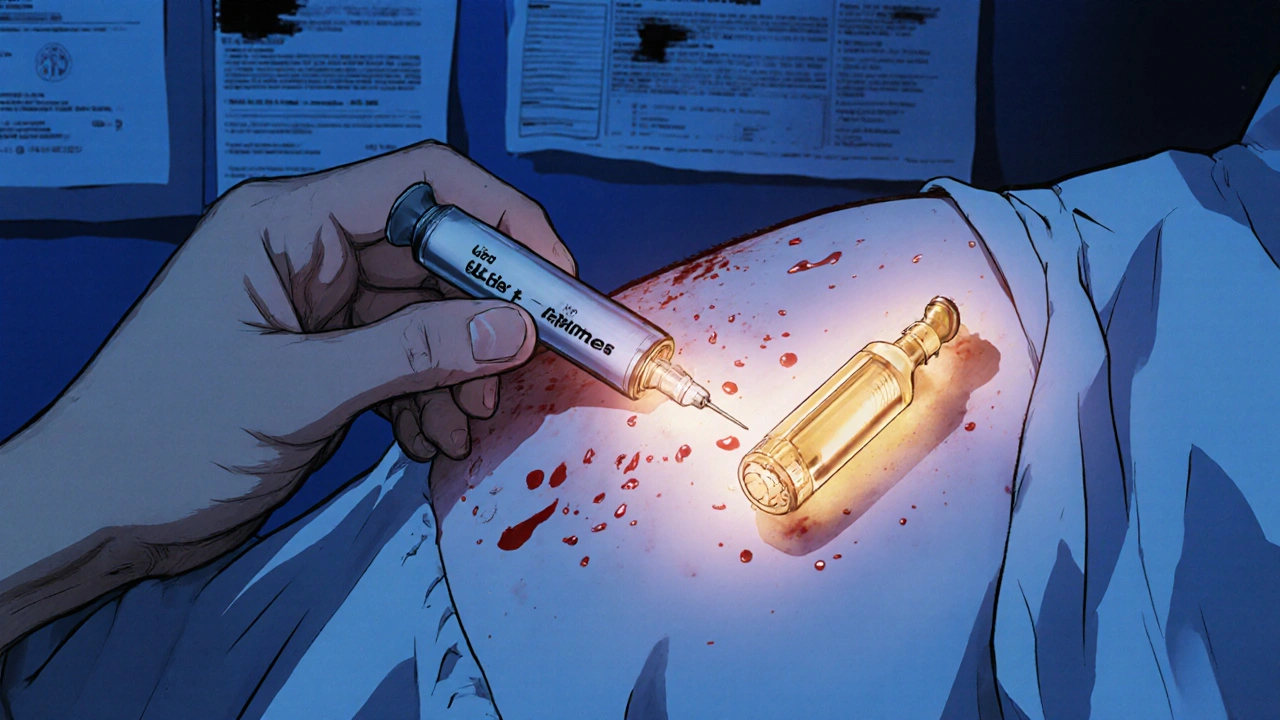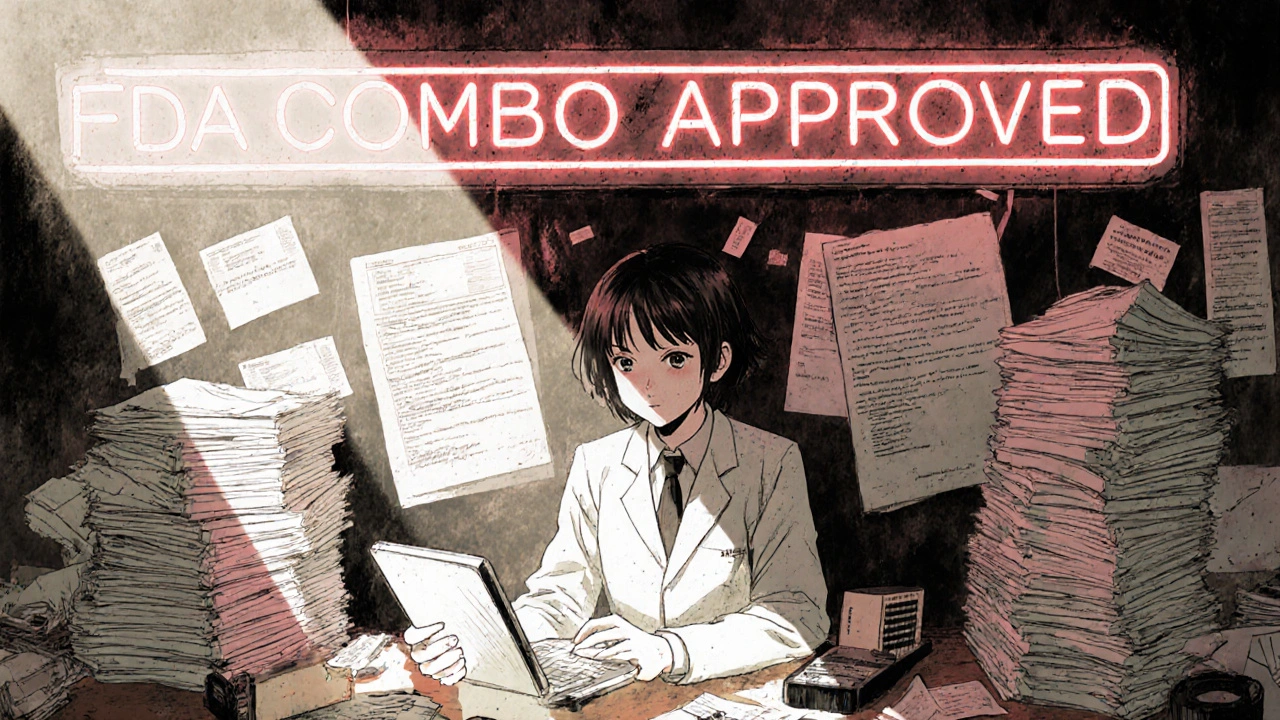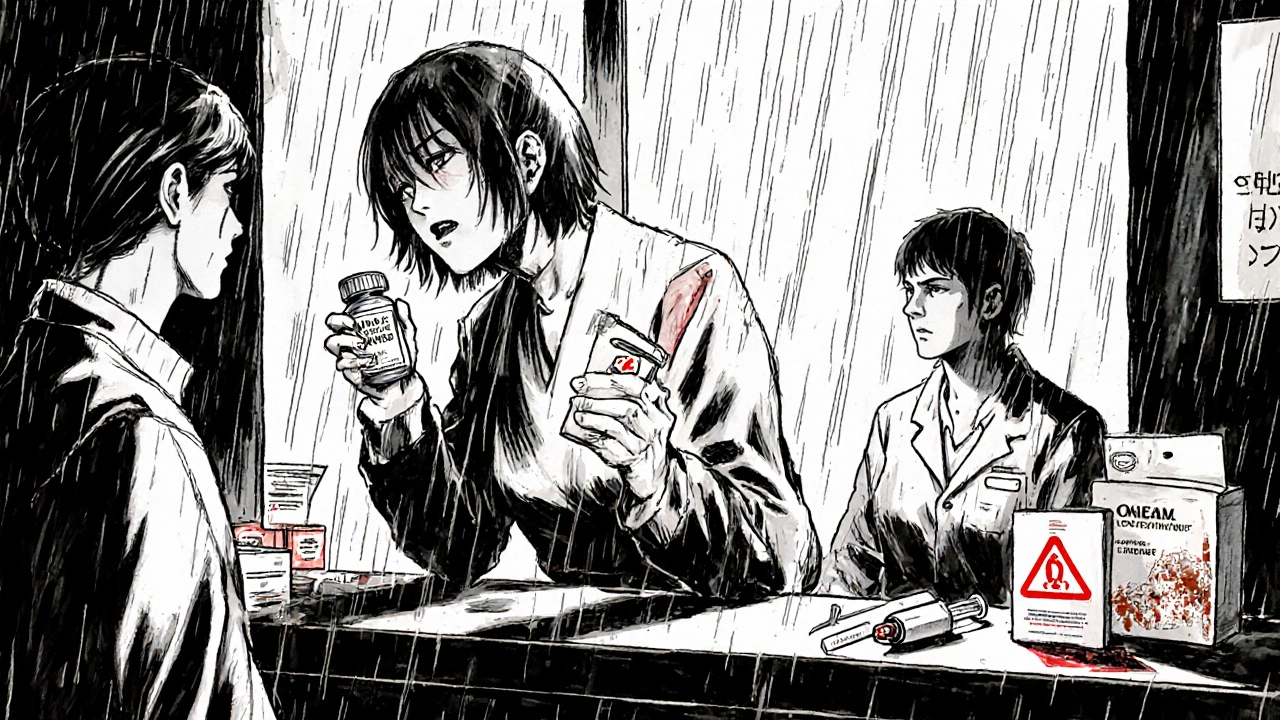Imagine you need an EpiPen. Your doctor prescribes it. Your pharmacy gives you a generic epinephrine injector - but it doesn’t work the same way. You panic. You’re not alone. This isn’t a glitch. It’s the reality of generic combination products.
Most people think generics are simple: same drug, cheaper price. But when a product combines a drug with a device - like an inhaler, auto-injector, or prefilled syringe - things get messy. The generic version isn’t just the drug. It’s the drug and the device working together. And right now, the system isn’t built to handle that.
What Exactly Is a Combination Product?
A combination product isn’t just two things in one box. It’s a single medical product made of two or more parts that work as one. The U.S. Food and Drug Administration (FDA) defines it as a product where:
- Drugs and devices are physically combined (like a prefilled syringe),
- They’re packaged together (like an inhaler with a spacer), or
- They’re sold separately but labeled to be used together (like a generic epinephrine vial and a specific auto-injector device).
The key? The parts aren’t interchangeable. The device isn’t just packaging - it’s part of the treatment. If the device fails, the drug fails. That’s why the FDA calls this the Primary Mode of Action - the part that does the most important job. If the drug does the healing, it’s reviewed by the drug center. If the device does the delivery, it’s reviewed by the device center. But when both are critical? That’s where the confusion starts.
Why Can’t You Just Swap the Drug?
Here’s the problem: state laws let pharmacists substitute generic drugs for brand-name ones - automatically, unless the doctor says no. That’s how 90% of prescriptions today are filled with generics. But those laws were written for pills, injections, and creams. Not for devices.
Take the EpiPen. The branded version has a specific auto-injector with a spring-loaded needle, a safety shield, and a click you feel. The generic drug - epinephrine - is chemically identical. But if you use a generic epinephrine vial with a non-approved injector? You might not get the right dose. Or worse - you might injure yourself. The FDA requires that any generic version of this product must match the original device exactly in how it’s used. That’s not just chemistry. It’s human behavior.
That’s why pharmacists are stuck. They can’t swap the drug alone. They can’t swap the device alone. They need both to be approved together as a combo. And that’s rare. Only 38% of complex generic combination products have more than one approved version. Compare that to 72% for regular generics. The system isn’t broken - it’s just not built for this.
The Hidden Costs of Complexity
Developing a generic combination product isn’t just harder. It’s way more expensive. For a regular generic pill, development takes 12-18 months. For a drug-device combo? 24-30 months. Why? Because you don’t just test the drug. You test how real people use the device.
The FDA requires a six-phase human factors study. That means recruiting patients, watching them use the device, recording mistakes, redesigning, testing again. This isn’t lab work. It’s behavioral science. And it costs between $2.1 million and $3.7 million extra per product. That’s why only 17 companies control 83% of the market. Small manufacturers can’t afford it.
And the cost doesn’t stop at development. Patients pay more. A 2024 survey found people using complex generic combinations pay 37% more out-of-pocket than those using simple generics. Why? Because there’s little competition. If only one company makes the approved combo, they can set the price. That’s the opposite of what generics are supposed to do.

Real People, Real Problems
It’s not just data. It’s people.
On Reddit, a user asked: “Why can’t my generic EpiPen substitute normally?” Over 280 comments poured in. Pharmacists wrote: “I had a patient come in crying because her insurance wouldn’t cover the branded device, and the generic device wasn’t approved yet.” Another: “I had to call the doctor three times because the patient couldn’t get the right combo.”
Pharmacists surveyed by the National Community Pharmacists Association said 68% have seen substitution confusion. Over 40% get at least one patient complaint per month. Doctors aren’t immune. A 2024 AMA survey found 57% have delayed treatments because patients couldn’t get the right combo. The average delay? 3.2 business days. That’s not just inconvenience. That’s risk.
One patient in California needed a generic asthma inhaler. Her insurance approved the drug - but not the specific spacer it needed. She went 11 days without treatment. Her asthma worsened. She ended up in the ER. The problem? The spacer wasn’t part of the generic approval. The system didn’t see it as connected.
What’s Changing - And What’s Not
The FDA knows this is a problem. In April 2024, they released new guidance to clarify what’s needed for generic combo approval. They’ve hired 32 more reviewers just for these products - a 45% increase since 2022. And in June 2024, Commissioner Robert Califf launched Complex Generic Initiative 2.0, aiming to cut approval times by 30% by 2026.
States are moving too. California and Massachusetts passed laws requiring pharmacists to be able to substitute generic combos when they’re approved as equivalent. Other states are following. But here’s the catch: even if a combo is approved, it’s still rare. Only 12% of the combination product market is generic. The rest? Still branded. And that’s not because generics aren’t possible. It’s because the system makes it too hard.
And here’s the biggest gap: there’s no national standard for what “therapeutic equivalence” means for a drug-device combo. The FDA approves each product individually. But no database tells pharmacists or doctors which generics can be swapped with which brands. No “Orange Book” for combos. So even if a generic combo exists, no one knows if it’s interchangeable.

What You Can Do
If you’re a patient:
- Ask your pharmacist: “Is this a combination product? Is the generic version approved as a full combo?”
- If your insurance denies coverage, ask for the specific brand and device combination that’s approved. Don’t accept partial substitutes.
- Report confusion or delays to your state pharmacy board. Patient voices are pushing change.
If you’re a prescriber:
- Write prescriptions with the full brand name and device - don’t just write “epinephrine auto-injector.”
- Check the FDA’s list of approved combination products before prescribing.
- Advocate for clearer labeling and substitution rules in your hospital or clinic.
If you’re a pharmacist:
- Know the difference between a generic drug and a generic combination product.
- Don’t assume substitution rules apply. Always verify if the entire combo is approved.
- Use the FDA’s website to check approved generic combos - and keep a printed list in your pharmacy.
The Future Isn’t Just Cheaper - It’s Smarter
The global market for drug-device combinations is growing fast - projected to hit $214 billion by 2028. But if we keep treating them like simple generics, patients will keep paying more, waiting longer, and risking their health.
The solution isn’t just more approvals. It’s a new system. One that recognizes: when a drug and a device are meant to work together, they’re one product. Not two. And if you want the benefits of generics - lower cost, wider access - you need to approve them as one.
Until then, the gap between what’s possible and what’s allowed will keep growing. And patients will keep paying the price.
Can I substitute a generic drug for a branded combination product?
No - not unless the entire combination - drug and device - is approved as a generic. Even if the drug is chemically identical, the device may not be interchangeable. Substituting only the drug (or only the device) can be unsafe or ineffective. Always check if the full combo has FDA approval as a generic.
Why are generic combination products so expensive?
Because they’re hard to make. Developers must prove the generic device works exactly like the brand’s - not just in the lab, but in real hands. This requires expensive human factors testing, which adds $2-$4 million and 9-15 months to development. Few companies can afford it, so competition stays low, and prices stay high.
Are there any generic combination products available?
Yes - but they’re rare. Examples include generic versions of inhalers like Advair and auto-injectors like EpiPen. However, only 38% of complex combination products have multiple generic approvals. Most still have only one approved version - often the brand name. Check the FDA’s database for approved combinations.
Why doesn’t the FDA approve more generic combinations?
The approval process is complex and resource-heavy. The FDA requires detailed comparisons of device interfaces, usability testing, and manufacturing data for both components. Many applications get rejected for inadequate device analysis - 43% of rejected submissions cite this as the main issue. Limited staff and unclear guidance have slowed approvals, though new initiatives aim to fix this.
What’s being done to fix this problem?
The FDA launched the Complex Generic Initiative 2.0 to speed up approvals and has hired 32 new reviewers. Fourteen states are updating substitution laws to allow pharmacists to swap approved generic combos. Industry groups are pushing for clearer guidelines. But real progress will require a national system that treats drug-device combos as single products - not two separate ones.
How do I know if my prescription is a combination product?
Look at the name. If it includes a device - like “auto-injector,” “inhaler,” “prefilled syringe,” or “patch system” - it’s likely a combination product. Ask your pharmacist or check the FDA’s website for the product’s approval status. If the generic version is listed as a full combo, it’s interchangeable. If not, don’t substitute.


Rachelle Baxter
November 24, 2025 AT 19:22Let me just say this: if your pharmacy is substituting a generic epinephrine vial with a non-approved injector, they’re not just cutting corners-they’re endangering lives. 🚨 The FDA guidelines are crystal clear, and pharmacists who ignore them should lose their license. This isn’t ‘generic vs brand’-it’s life-or-death precision. And yes, I’ve read every single FDA document on combination products. You’re welcome.